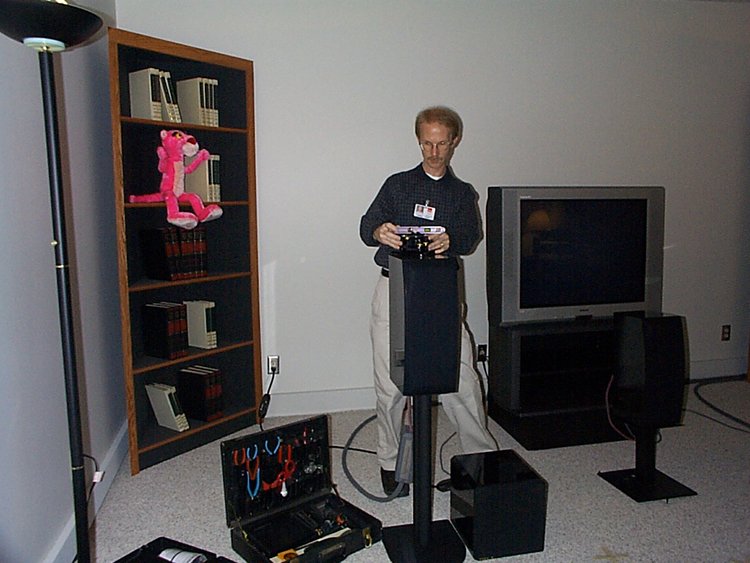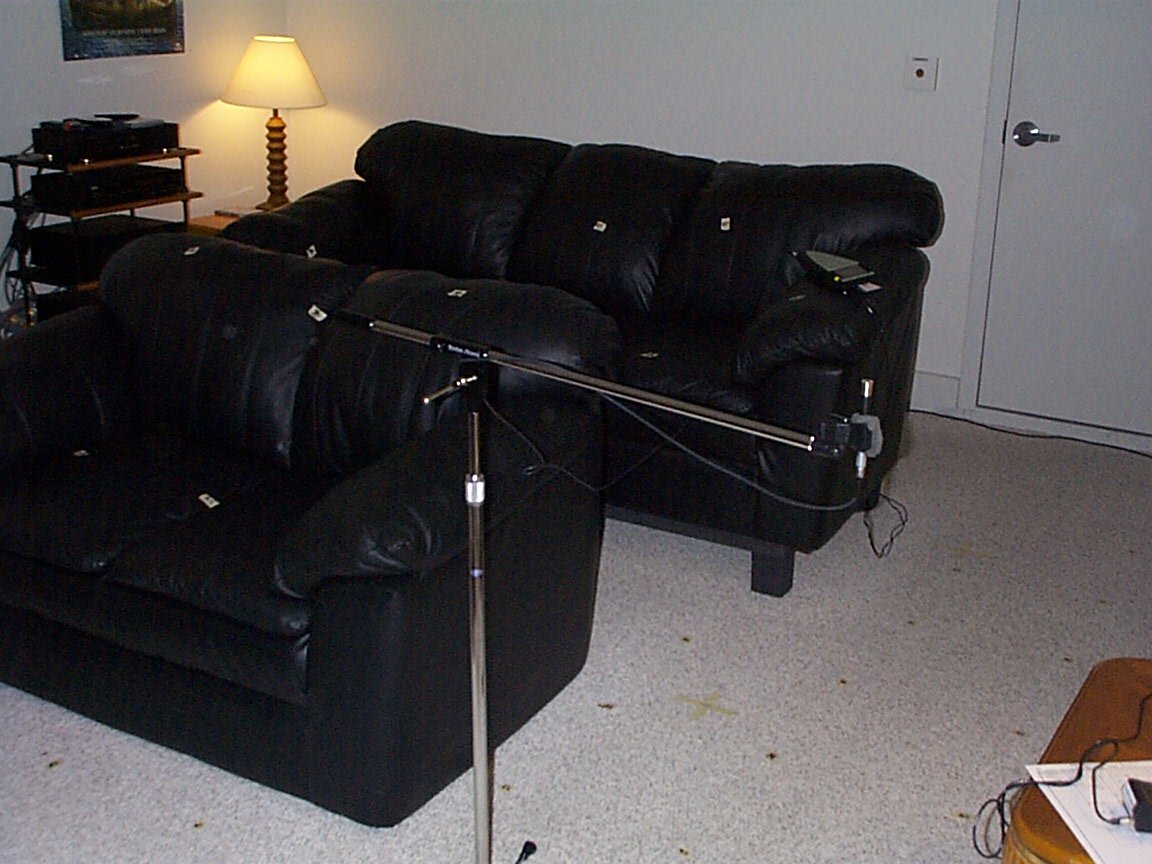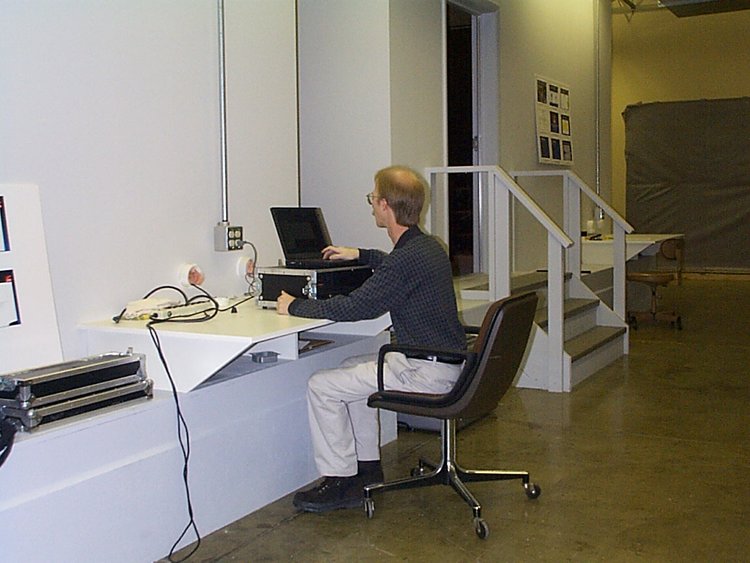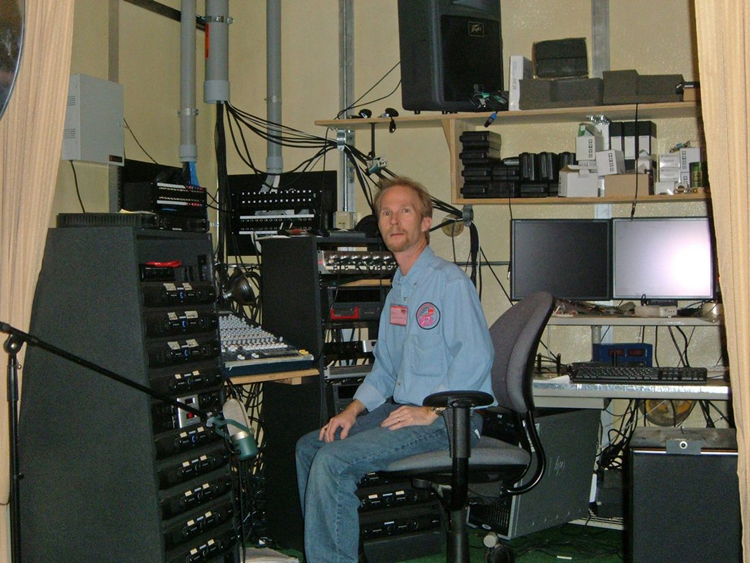
“90% of audiophiles are not experiencing 50% of their equipment’s potential.”
At High End Munich 2022, I had the opportunity to interview industry veteran Norman Varney of A/V RoomService, Ltd., who debunked many of my theories on how room acoustics influence the sound in our listening rooms. He has modeled, installed, and improved hundreds of recording studios, listening rooms, and home theatres, in addition to writing several acoustics-related scientific papers published worldwide. Anechoic chambers, reverberation chambers, and acoustic laboratories hold no secrets for Norman. When you can count Robert Harley, editor in chief of The Absolute Sound, and Bob Katz, the Grammy-winning mastering engineer, among your satisfied customers, it goes without saying that you’ve achieved a certain notoriety in your field.
A native of Southern California, Norman discovered his passion for music on February 9, 1964. It’s the day the Beatles introduced themselves to 73 million Americans via their inaugural TV appearance on the Ed Sullivan Show. Soon after, Norman began collecting vinyl records and bought his first quality sound system.

Norman’s first jobs gravitated around music and audio. An especially memorable one was his gig at L.A.’s Platterpuss Records, a record store a block from Manhattan Beach. Reminisced Norman: “We had bikinis going through the records all day long, and we had used records that we could buy for ourselves and promos from the record companies. It was a lot of fun.” Norman later worked for stereo stores in the region, before relocating with his wife and daughter to Northern California’s Grass Valley, whose only stereo store, Alta Buena Stereo, he not only worked at but eventually bought, at age 22, with his dad. The store was sold 12 years later when Music Interface Technologies (MIT) gave him a job as an acoustics and electrical engineer. That was followed by stints at Owens Corning (OC) and Kinetics Noise Control.
His work at OC would prove life changing. The company recruited Norman to work at its Science and Technology Center in Ohio.
“OC hired me because it had developed something called the ARS acoustic system,” Norman said. “They knew they had a good product—they had an acoustics lab so they knew exactly how the ARS performed and that it could be modeled in computers. What they didn’t have was audiophile experience that understood room modes, first order reflections, what reverberation targets to look for, etc. They didn’t know how to apply ARS to specific rooms. That’s where I came in.
“When I started at the Science and Technology Center, the ARS system was a single, reversible panel. You could use it in one of two ways—it depended on how you had it oriented. It could be either a low-frequency absorber or a high-frequency absorber. Then they introduced a diffuser to the system. The panels were covered with an acoustically transparent stretch fabric. I would computer-model the room’s panel layout and installation was done on-site so everything fit perfectly. Sometimes I would go to the jobsite to test and fine-tune the configuration.”
To demonstrate the ARS’s potential, Norman had two perfectly identical audio-video rooms built to serve as a laboratory testing ground.
Said Norman: “The two Identical rooms were built inside a large building designed for acoustic testing of HVAC (heating, ventilation and air-conditioning) products. They were constructed to be relatively free of external noise, and designed with dimensions that offered relatively linear room mode distribution. The research was intended to demonstrate the difference between a room equipped with the ARS system and one without it.”
Great care was taken to duplicate the rooms’ interior which was made to resemble that of a regular home.

“They were constructed and furnished like a typical U.S. family room” said Norman. “They looked exactly the same, with a library, a few armchairs and a sofa, a large TV and a surround sound system. The sound system was of good quality, but nothing extravagant. The average person could afford it.
“I calibrated both systems to be optimized and identical in set-up and performance. The goal was that the only difference between them would be the ARS system. We wanted to characterize the difference acoustically. But then something else happened. It turned out that the emotional impact on people experiencing the tests was profound. That’s when things got really interesting.
“At OC, we often had to explain to stakeholders and VIPs who had no special interest in music or film why we were doing what we were doing, and what the two rooms were for. So I would do a little dog and pony show. I made them enter the room without acoustic treatment and played them a scene from the film Das Boot. It’s the one where the submarine tries to escape a destroyer by diving to a depth that exceeds its designed capacity to withstand the pressure. It’s a very intense scene, as the hull begins to implode, water seeps in everywhere and floods the interior, there are explosions, screams, and panic sets in. I then invited the group to watch the same scene in the treated room and every time there was the same reaction from everyone: ‘I want this in my house!’
“It’s when I discovered that it wasn’t only me who could appreciate the effects of better acoustics, but everyone could, regardless of their ability to analyze sound or their interest in audio. What was important was the experience lived by the individual.

“I thought: ‘We have to test the people!’ OC had their own medical facility and staff, and every year the 400 to 600 of us who worked at the Science and Technology Center had to have our hearing checked at the audiology booth. The staff gave me a list of people who met my criteria for hearing, and from that list I chose twelve volunteers. So we did biofeedback testing using the two rooms, but we changed it up. Sometimes the volunteer would start with “A” room, sometimes with “B” room. We always took their measurements before and after, and let them cool down before the next room. What we were checking was heart rate, respiration, sweat, and blood pressure.
“You could see the people on the graph. You could see what part of the scene bothered them most—when the water comes in, or when there’s blood. It was detailed. It surprised me. This was a highlight in my career. It showed that acoustics could have a significant emotional impact.”
Following a mega lawsuit it lost over products using asbestos, OC nearly ceased operations of their acoustics lab, one of the best in the world. It was at this time that Norman came up with the idea of starting A/V RoomService.
I told him the closure of the acoustics research department must have been difficult.
“Fortunately, OC didn’t shut down the lab,” Norman said. “It’s still in operation today because, following my recommendations, the company began to rent its facilities to researchers from different organizations to finance itself. So I still have access to it. I also use the NWAA Labs facilities in Washington State.
“I’m driven by research and development. The more you learn, the more you realize how limited your knowledge is. That’s why I find it bizarre to hear some very reputable people in the audio world say that we already know everything there is to know about audio. That’s totally absurd!”
Starting a new business is hard at the best of times. I asked if he encountered problems while trying to launch A/V RoomService.
“It was done quite easily,” he said. “I continued to work at OC for the first six months after I started my business. That was at the end of 2001 and subsequently Owens Corning hired me as an external consultant for several projects. We have, for example, built several control rooms to study the interdependence of noise and perception. I also worked a lot with Kinetics Noise Control in creating new products, mainly acoustic diffusers.”
I mentioned that we often see comments on the Internet about how one’s budget should be spread out over a system’s total cost. For example, 40% for the loudspeakers, 30% for the source, 20% for the amplification, and 10% for the cabling. For acoustics, it’s almost always 0%. Did he see that as misguided?
“Yes. For decades I’ve been trying to make audiophiles understand how important having good room acoustics is to getting the most out of their audio gear. I think people are reluctant to get into it because of mainly five reasons:
- They don’t understand what it’s about;
- They’ve never experienced a properly treated room;
- It’s more complex than buying an amp and putting it on a shelf;
- It reduces the equipment budget;
- It won’t get the significant other’s stamp of approval.
“That’s just the end user. For retailers, selling room treatment is too complicated. It doesn’t have to be, but they don’t want to touch it, even if they could make money from it. It’s not tangible or sexy. Yet, I feel it’s their duty to warn the customer, ‘Listen, Mr. Customer, the sound here is very good but it’ll likely not be as good in your home as it is here. That’s because our room is acoustically treated.’”

I told Norman the story about when a well-known high-end retailer came to my house and was impressed by the room treatment I’d installed but said he couldn’t recreate the same environment in his store. He was worried potential customers wouldn’t buy his equipment thinking it would sound worse in their untreated home, and he didn’t want to face objections about room treatment.
“I’m sorry, but this kind of approach does the customer a disservice,” said Norman. “The customer should be informed and should be the one making the decision. It’s not up to the retailer to make the decision for the customer. Or else we find ourselves with a customer who has no idea what the potential of his sound system is. There are so many things you can do acoustically in a low-key way—an area rug, carpet, bookcase, plants, and so on. It doesn’t have to look obvious. Enter a room where one of my company’s FRP systems is installed and you’ll never know it has absorbent panels and diffusers. The acoustics are excellent, but unless you go and touch the wall and push on the fabric, you’ll never suspect that the room has been treated.”
Did he think that audiophiles upgrade their equipment to improve the sound when room acoustics would be more effective?
“Absolutely. The two biggest obstacles facing audiophiles are confusion and habit. I call it chasing your own tail because there are acoustic anomalies and audiophiles are trying to build a system around those anomalies. To compensate they’ll buy a new preamp or cables but they never arrive at the desired result. All this because of the acoustics… or almost! I’m generalizing but acoustic anomalies are common and unless those are addressed first the problems will persist. I make a bold statement in my seminars, and that is, ‘90% of audiophiles are not experiencing 50% of their equipment’s potential.’ The equipment can never overcome the acoustics.
“Until you experience what acoustic treatment can do, you don’t know what you’re missing. That’s true for any of us audiophiles. We’ve all experienced those moments when we heard something for the first time and went ‘wow’.”
Read Pt 2 here.

















Leave a Reply